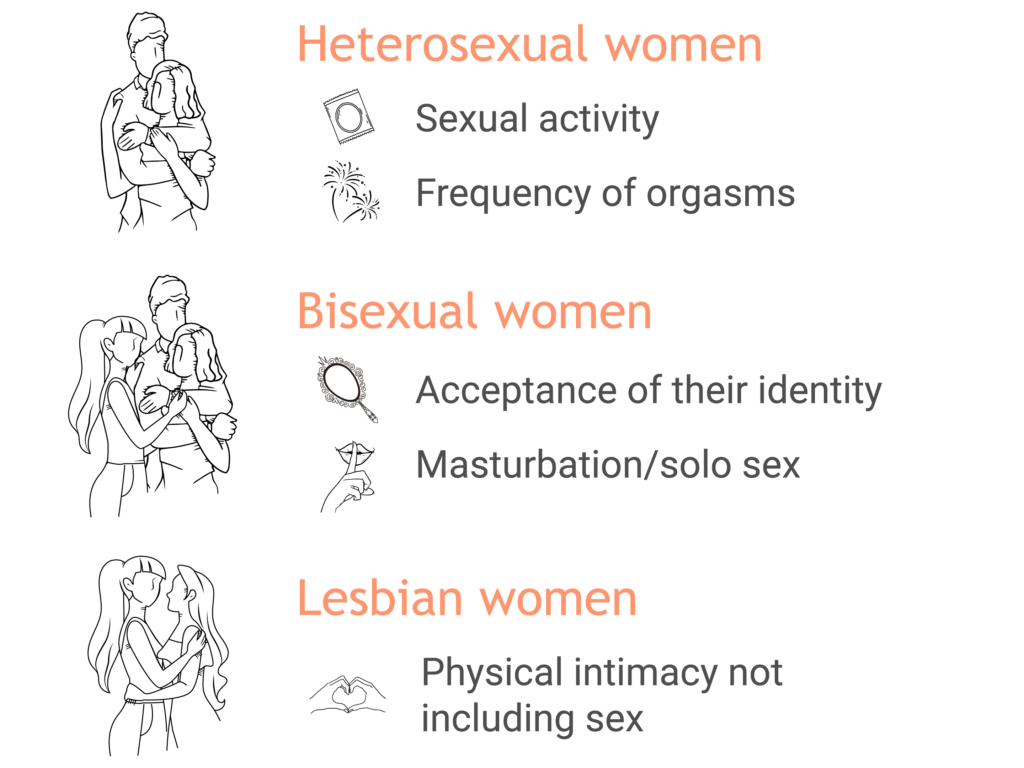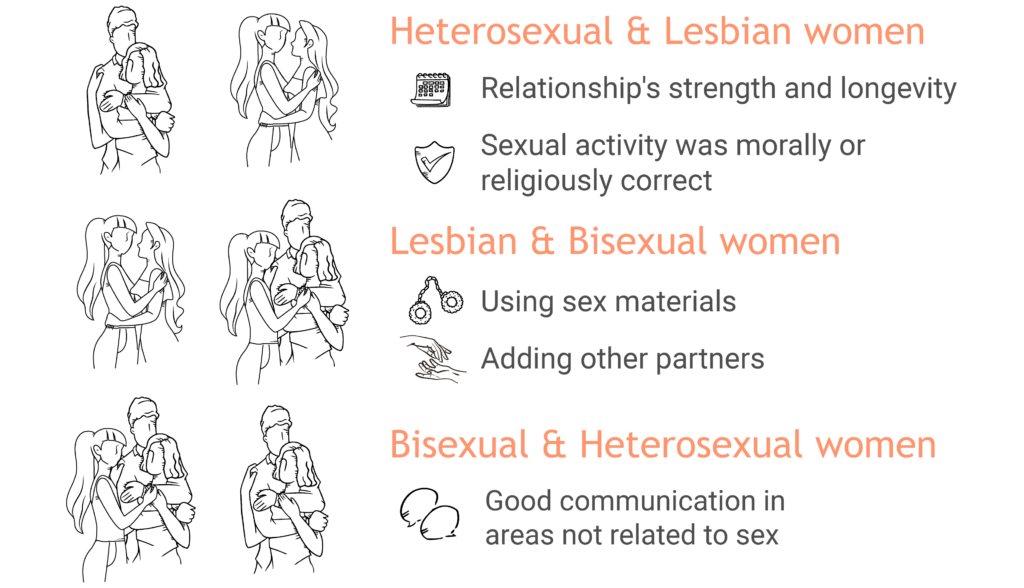Sexual satisfaction is not one-size-fits-all
Sexual satisfaction is a complex topic which covers more than just having good sex or frequent orgasms. It includes aspects outside of just intercourse and sexual function, such as desire or sexual problems, though it does not have a common definition or explanation. What researchers do know is that sexual satisfaction can be an important part of maintaining stable relationships. It also plays a role in overall well-being, both emotional and physical.

How do we measure sexual satisfaction?
Measuring sexual satisfaction with a common tool may not give an accurate view from all sides as some tend to be more suitable for one gender or sexual orientation rather than others.
This variation in how women with different sexual identities (heterosexual, bisexual, and homosexual (lesbian)) experience sexual satisfaction forms the basis of the study conducted by a team led by Dr. Laura Holt. The researchers wanted to look at the differences in how women of varying sexual orientations responded to factors that influence their sexual satisfaction using both current and new research tools.
About the study
The research was done through an online survey capturing people in the US. Around 64% of participants identified themselves as heterosexual, while 21% and 13% identified themselves as bisexual and lesbian respectively.
Participants answered a mix of questions from different measures and scales, such as rating their sexual satisfaction from 1-7 and answering more qualitative questions such as: “…how did you decide your level of sexual satisfaction?”. The tasks following this rating step included answering the Potential Sexual Satisfaction Factors (PSSF) survey (developed for this study) and the New Sexual Satisfaction Scale, which is based on sexual health counseling and therapy literature.
Differences and similarities
While the different groups gave similar answers to many of the questions, some important differences were seen:
Heterosexual women placed more importance on performing sexual activities and frequency of orgasms to their sexual satisfaction.
Bisexual women said that acceptance of their identity and masturbation/solo sex were more important to their sexual satisfaction than the other groups.
Lesbian women rated physical intimacy (not including sex) more strongly than the other two groups.
Sometimes two groups showed similar results:
Heterosexual and lesbian women responded that the relationship’s strength and longevity and the moral or religious correctness of their sexual activity were important to their sexual satisfaction.
Lesbian and bisexual women endorsed the use of sex materials and adding other partners more than the heterosexual group.
Bisexual and heterosexual women felt that it was important to their sexual satisfaction to have good communication on areas not related to sex.
What does this mean?
The study showed the importance of treating sexual satisfaction individually. Like a fingerprint, each person’s perception of the things that affect their sexual satisfaction is unique and personal.
What's missing?
Asking the women to write down an answer to what they think makes them sexually satisfied also gave the researchers some insight into areas that women think are important that were missing from their list of factors (PSSF). These include feelings after sex, physical capability for sex, and the number one factor listed by participants, desire.
Things to note
While the team aimed to have as diverse a sample as possible, most of the respondents were college educated or had a high school diploma (over 90%) and identified themselves as white (88%). The team also made a special effort to reach out to more religious and conservative women but the questions in the survey restricted the researchers’ ability to identify these respondents.
This survey was also aimed at people in a relationship and the questions were about said relationship, so single women were not included. Also, the survey was more suited to people that identified as women or female so it may not distinguish those who are more fluid on the gender spectrum.
Future research
Future research can include studies looking at sexual identities in people that present as male or non-binary/gender fluid. The language used could also be adapted, since some of the language was more suited to heterosexual relationships (e.g. using the word “intercourse”).
Reference article:
Holt LL, Chung YB, Janssen E and Peterson ZD (2021) Female Sexual Satisfaction and Sexual Identity. J Sex Res. Feb;58(2):195-205.

